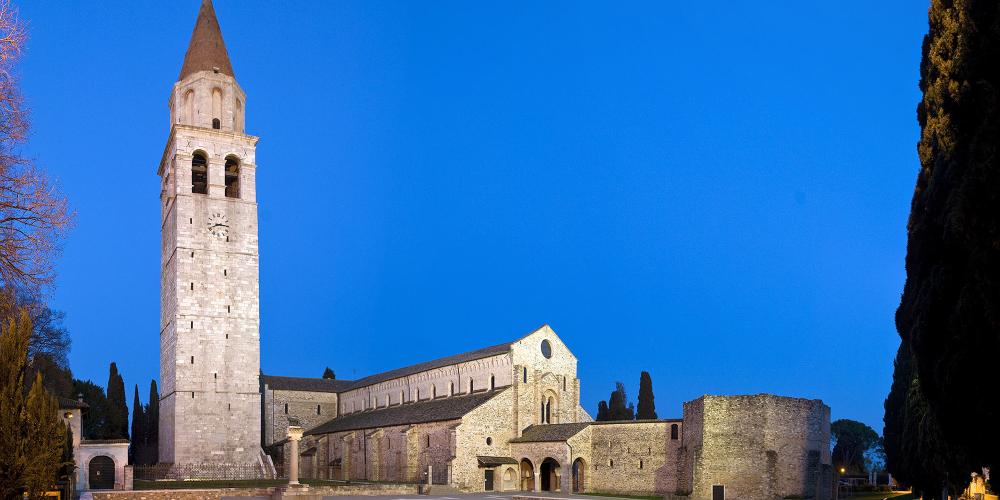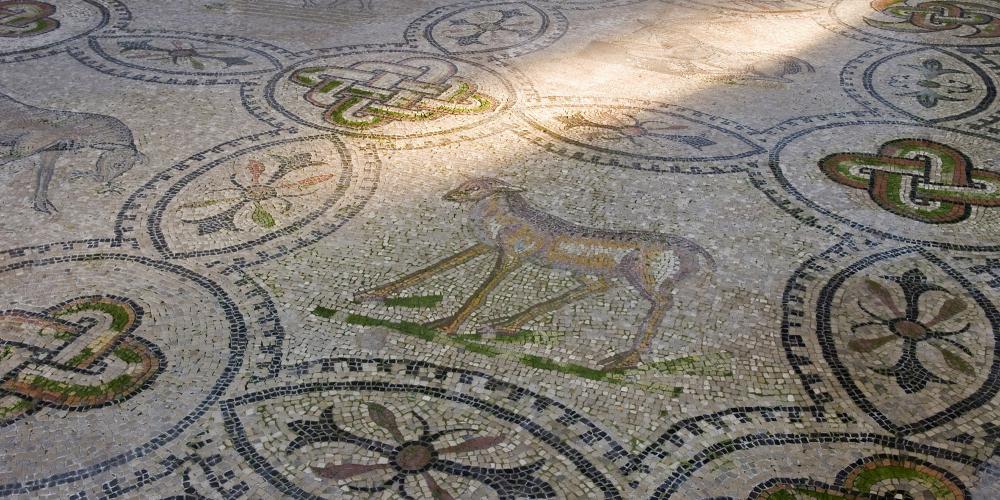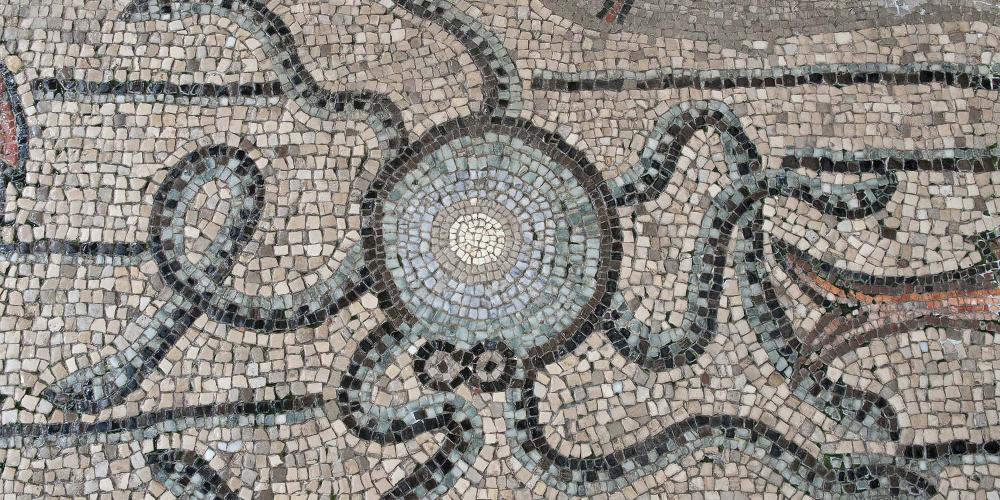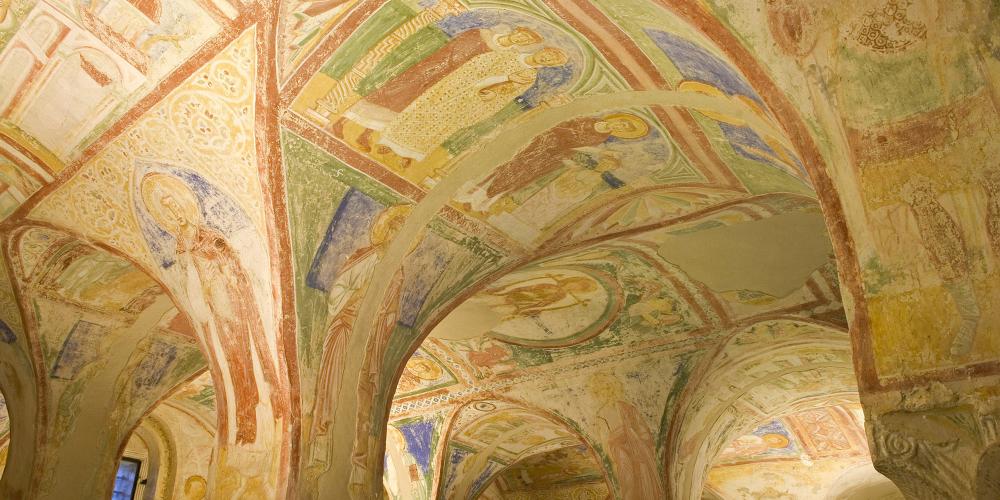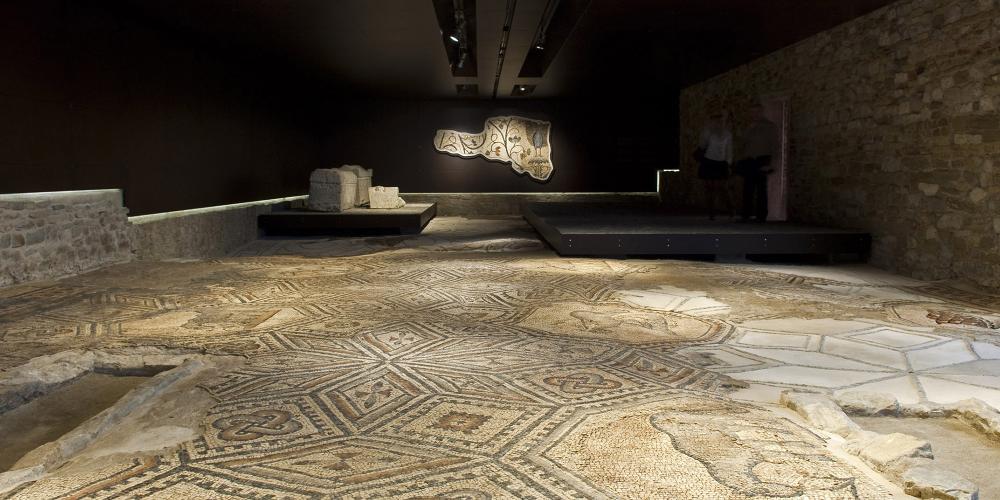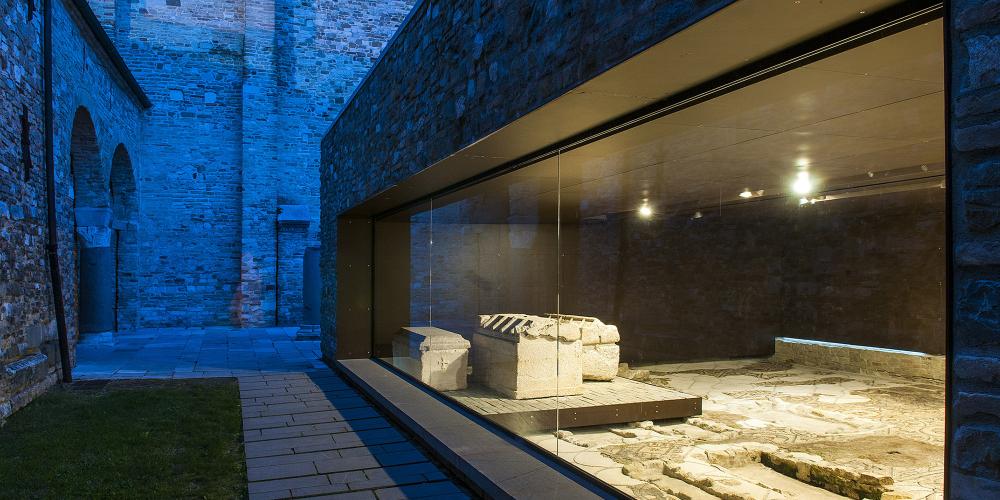Basilica, Baptistery and Südhalle

Reputed as one of the most beautiful Early Christian compounds of Antiquity, Piazza Capitolo includes the basilica, the baptistery, the Südhalle and the campanile.
The first Christian basilica was erected in Aquileia a few years after the Edict of Milan of 313 AD, whereby Emperor Constantine granted freedom of worship to Christians. Four more churches were built on top of the first one during the following centuries.
Today's church is custodian to an authentic work of art: the largest Early Christian mosaic of the Western world (750 m²). The basilica was built on the initiative of bishop Theodore in the early 4th century. The mosaics of the southern hall tell three episodes of the story of Jonah: the sea monster swallowing the prophet who had refused to go and preach in Nineveh; Jonah thrown up onto the beach before starting his mission; Jonah resting in the shade of a trellis after converting the city. The whole story is an allegory of the death and resurrection of Jesus Christ and, in broader terms, of the afterlife reserved to the baptised.
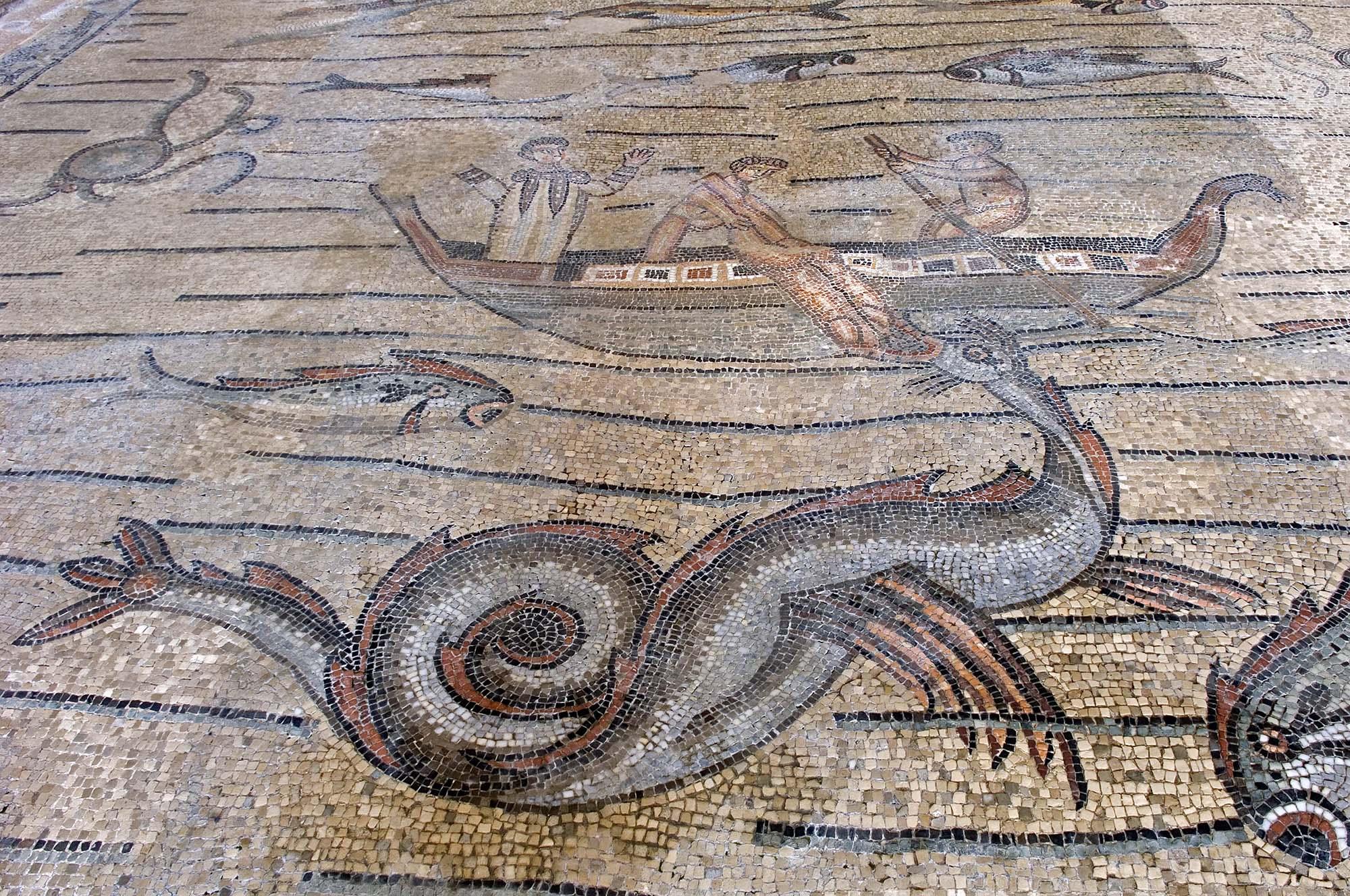
The mosaics of the Northern hall bear a more complicated symbolism. What is more striking here is the intensity of colours and the perfection of the scenes depicted on the floor, including the fight between a cockerel and a tortoise symbolising the victory of Orthodox faith over heresy.
After admiring the mosaics, visit the crypt below the altar. This shrine was built under Patriarch Maxentius (9th century) to hold the relics of martyrs Hermagoras and Fortunatus. The walls are decorated with frescoes from the second half of the 12th century that tell the legend of Saint Mark visiting the community of Aquileia.
Opposite the basilica entrance, you will find the Baptistery and Südhalle. The Baptistery – the third oldest in Aquileia – has an octagonal plan, a symbol of rebirth, and includes a hexagonal baptismal font restored in the 19th century. The Baptistery gives access to the Südhalle, where multicoloured geometrical mosaics from bishop Chromatius's times are found. A legend goes that the blackened tesserae of this floor are owed to the fire started by Attila in 452 AD. Hanging on a wall is a beautiful mosaic with a peacock (late 4th c. – first half of 5th c.), a symbol of immortality and therefore of resurrection, seen frontally with its tail fanned out.
Next to the basilica, a campanile was built at the time of Patriarch Poppo between 1019 and 1042. Inside, you will admire a portion of the mosaic floor of the northern hall of the basilica. Don't be discouraged by the height of the tower (73 m) and climb to the top to enjoy a stunning view!
Basilica, Baptistery and Südhalle
**April to September: **
9:00 - 19:00
**March and October: **
9:00 - 18:00
**November to February: **
10:00 - 16:00 (Saturdays, Sundays and holidays, from 9:00 to 17:00)
**January: **
10:00 - 17:00
**Closing days of Basilica and Baptistery: **
December 25th: afternoon
January 6th: 14:00 to about 15:30
All Sundays: 10:00 - 11:30
Free entrance to the Basilica
Ticket for Baptistery:
full price € 3
reduced price € 2,50
